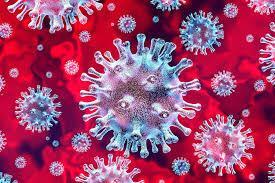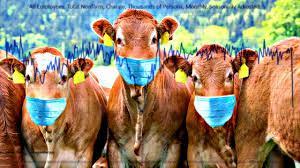My Capital District Humanist Society recently had a talk (over zoom) on the biology of the pandemic. It was a good scientific overview.

She began with a Joshua Lederberg quote saying humanity’s biggest threat is viruses; and by harking back to the great past fear over polio (another virus); as well as the once-common childhood illnesses Measles, Mumps and Chicken Pox; all now defeated by vaccines (at least until anti-vaxxers came along).
SARS-CoV-2 is the name of this virus. Covid-19 is the illness it causes. It’s common for viruses to jump to humans from other animals.

A virus is not a living thing, being much simpler than a bacterium or other kind of cell. It straddles the boundary between the biological and the chemical. Now, our genetic material is DNA; DNA is a molecular template for making RNA; and then RNA makes proteins. The genetic material for a virus can be either DNA or RNA. That genetic core, in a virus, is encased in a capsule of fatty stuff.

We have a hierarchy of defenses. First are simply physical barriers, like skin. Then there’s “innate immunity,” mainly white blood cells tasked with combating invaders in general, through what we call “inflammation.” The third level is “adaptive” immunity, when the body manufactures antibodies specific to a particular invader. But that takes a while. Lewis noted that Blood Type O seems to block the covid virus better than other types; whereas Type A is overrepresented among the victims. She also said that Africans may be suffering less than us from covid because their immune systems are already revved up due to all the various illnesses they’re exposed to.
We get infected mainly by taking in viruses in droplets spewed out in coughs or sneezes, or just breathing, by infected people.

Most who get infected with the covid virus suffer only mild symptoms, or none. It’s actually better from the virus’s point of view if it can do its thing without killing the host; hence Lewis saw some possibility that covid could mutate its way into such relative benignity. Meantime, however, it does make a minority of victims very sick. A lot in the body goes wrong. We have endothelial cells that kind of hold things together; and they “come apart at the seams.” The alveoli in our lungs, which transfer oxygen into our blood, fill up with “stuff,” and blood oxygen plummets. You also get blood clots, heart attacks, strokes, and organ failure. Your own immune system goes haywire trying to fight this, resulting in a “cytokine storm” with nasty positive feedback loops. (Also, those who recover from a bad covid episode seem to be left with a range of problems that will be long-lasting.)
As for treatment, the drug remdesivir seems to inhibit virus replication, somewhat hastening recovery. But Lewis was skeptical about a vaccine, saying we don’t actually know if that’s even possible, and anyhow it would take a lot longer to deploy safely than optimists currently contemplate.

